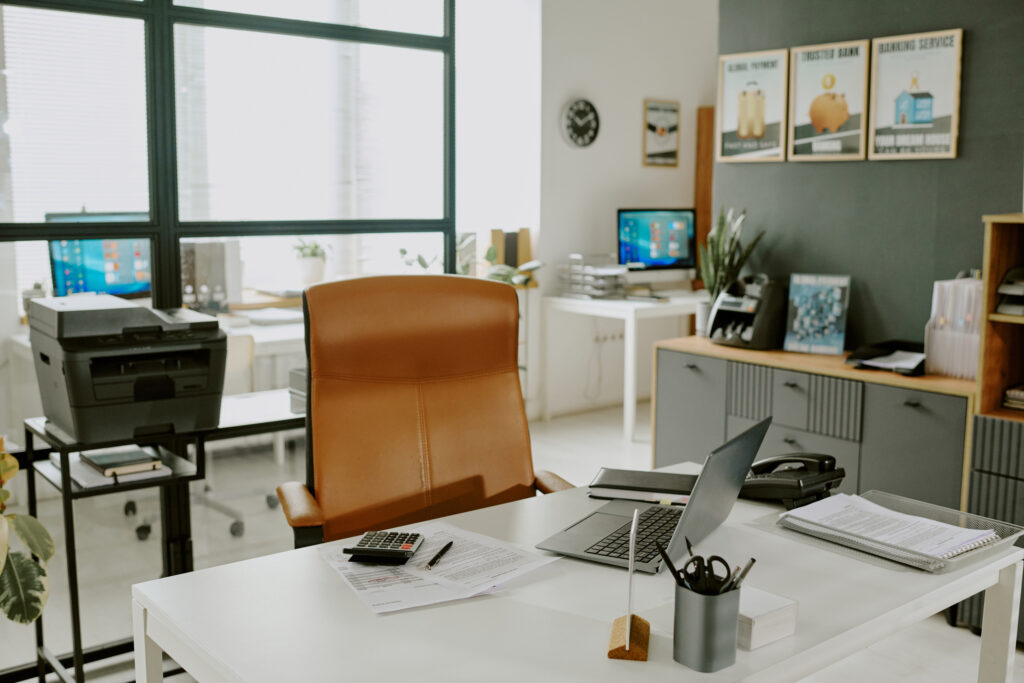

Columns/Blogs
Employee Experience
6 lessons from psychologists about workplace design and employee mental health
October 22, 2025
By Mia Barnes
 Credit: Adobe Stock/AnnaStills.
Credit: Adobe Stock/AnnaStills. Workplaces are naturally stressful environments; design choices can contribute to stress levels. Leaders looking for new ways to support their team members can reconsider their office’s interior design to better support everyone’s mental health. Slight changes may improve each team’s well-being in the long term.
1. Include air purifiers
Air can affect a person’s mental health in more ways than one. If an office’s HVAC system uses air next to busy city streets filled with carbon dioxide pollution, team members could be breathing chemicals that affect their mental health. Studies show carbon dioxide concentrations can affect neural arousal patterns during emotional processing. An air purifier can remove those toxins without too much distracting noise – some models are even designed to run in places like nurseries without waking babies.
Air purifiers may also remove lingering odours. Some office spaces deal with foul smells related to the chemicals floating in through the HVAC unit. Running a purifying unit throughout the workday could solve two problems simultaneously.
2. Provide break seating
Taking breaks throughout the workday is essential to maintaining a healthy state of mind. Laws regulate how often workers have their assured breaks, but they may not feel very relaxed if they continue sitting at their desks, as that is where they feel routinely stressed.
Adding comfortable seating in hallways, the workplace kitchen or other shared areas will give people places to decompress. If they don’t associate those areas with high-pressure responsibilities, they’ll return to their desk with a better frame of mind. Additional comfort items like plush pillows and coffee tables make break areas more inviting. People can relax, bond with co-workers and get back to work with renewed energy because they changed locations.
3. Use natural lighting
Fluorescent lights serve multiple purposes in professional environments. Everyone should be able to see documentation clearly and keep their desks out of shadowed spots, but fluorescent bulbs don’t provide many of the benefits natural light offers. Unfortunately, many professional spaces have fluorescent lights as permanent light fixtures.
Teams can embrace more natural lighting throughout the workday if they keep window shades open. Installing thin blinds or removing existing curtains will address the issue, too. If the workplace only has a few windows, people can add sunlight simulators to their desks or communal spaces.
4. Select intentional paint colours
Workplace leaders should check the office paint colours while taking a lap around the building. Some colours may stress people out more than others. Shades of blue and green reduce anxiety by easing the mind, so a paint project could be worth considering. Leaders can hire a crew to paint the office over a weekend to change the space’s design and provide mental health support.
The new splash of colour may also inspire employees, who may not feel as invigorated when surrounded by white or beige walls. Lacking inspiration makes projects more challenging. Team members may find they can accomplish creative work more quickly if their environment reflects the freedom they have in their professional roles.
5. Add acoustic furnishings
Moderating the sound levels in an office can be tricky. Sometimes meetings get loud. Employees might have noisy, extended phone conversations at their desks. Loud sounds are even more challenging in open office environments. Design choices like fabric furnishings may help.
Acoustic wall panels absorb sound. Workplace leaders should install them near the most common sources of loud noises so the employees sitting at the surrounding desks can enjoy a slightly quieter environment. Reducing echoes and sound waves could significantly improve everyone’s mental health in the workplace.
6. Install white noise machines
While loud noises can be distracting, soft noises may help people focus. If employees focus more easily, they may not expend as much energy trying to complete their daily responsibilities. Research shows that white noise machines set at 45dB can lower a person’s stress by supporting their focus.
Professional teams can add the machines around the office to create similar effects. The small units can hang from the ceiling or remain out of sight in corners. The soft noises emanating from them are easy to moderate if volume concerns arise. Adjust each machine’s volume as needed until everyone agrees the white noise doesn’t bother or distract them.
Improve workplace design and everyone’s mental health
Enhancing a workplace’s design can provide more than aesthetic improvements. Specific interior changes may also help everyone’s state of mind if explicitly chosen for mental health benefits. Leaders and teams can consider using more natural lighting, adding white noise machines and purifying the office air to make any commercial space less stressful.
Mia Barnes is the editor-in-chief at Body+Mind.